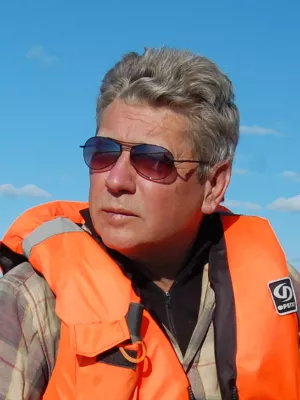
Per Möller
Professor

Paper II - Dirt, dates and DNA: OSL and radiocarbon chronologies of perennially-frozen sediments in Siberia, and their implications for sedimentary ancient DNA studies
Author
Summary, in English
Abstract in Undetermined
The sedimentary ancient DNA (sedaDNA) technique offers a potentially invaluable means of investigating species evolution and extinction dynamics in high-latitude environments. An implicit assumption of the sedaDNA approach is that the extracted DNA is autochthonous with the host deposit and that it has not been physically transported from older source deposits or reworked within the sedimentary profile by postdepositional mixing. In this paper we investigate whether these fundamental conditions are upheld at seven perennially frozen wetland sites across the Taimyr Peninsula and coastal lowlands of north-central Siberia. Optically stimulated luminescence (OSL) and radiocarbon (C-14) dating are used to constrain the ages of both the inorganic and organic fractions of perennially frozen deposits from which sedaDNA of extinct and extant species have been recovered. OSL and C-14 age/depth profiles, as well as single-grain equivalent dose (De) distribution characteristics, are used to assess the stratigraphic integrity of these sedaDNA sequences by (i) identifying the presence of primary or reworked organic and inorganic material, and (ii) examining the types of depositional and postdepositional processes that have affected specific sedimentary facies. The results of this study demonstrate that even though DNA preservation and stratigraphic integrity are commonly superior in perennially frozen settings, this does not, in itself, guarantee the suitability of the sedaDNA approach. The combined OSL and C-14 chronologies reveal that certain perennially frozen sites may be poorly suited for sedaDNA analysis, and that careful site selection is paramount to ensuring the accuracy of any sedaDNA study - particularly for 'latest appearance date' estimates of extinct taxa.
The sedimentary ancient DNA (sedaDNA) technique offers a potentially invaluable means of investigating species evolution and extinction dynamics in high-latitude environments. An implicit assumption of the sedaDNA approach is that the extracted DNA is autochthonous with the host deposit and that it has not been physically transported from older source deposits or reworked within the sedimentary profile by postdepositional mixing. In this paper we investigate whether these fundamental conditions are upheld at seven perennially frozen wetland sites across the Taimyr Peninsula and coastal lowlands of north-central Siberia. Optically stimulated luminescence (OSL) and radiocarbon (C-14) dating are used to constrain the ages of both the inorganic and organic fractions of perennially frozen deposits from which sedaDNA of extinct and extant species have been recovered. OSL and C-14 age/depth profiles, as well as single-grain equivalent dose (De) distribution characteristics, are used to assess the stratigraphic integrity of these sedaDNA sequences by (i) identifying the presence of primary or reworked organic and inorganic material, and (ii) examining the types of depositional and postdepositional processes that have affected specific sedimentary facies. The results of this study demonstrate that even though DNA preservation and stratigraphic integrity are commonly superior in perennially frozen settings, this does not, in itself, guarantee the suitability of the sedaDNA approach. The combined OSL and C-14 chronologies reveal that certain perennially frozen sites may be poorly suited for sedaDNA analysis, and that careful site selection is paramount to ensuring the accuracy of any sedaDNA study - particularly for 'latest appearance date' estimates of extinct taxa.
Department/s
- Quaternary Sciences
Publishing year
2011
Language
English
Pages
417-445
Publication/Series
Boreas
Volume
40
Issue
3
Links
Document type
Journal article
Publisher
John Wiley & Sons Inc.
Topic
- Geology
Status
Published
ISBN/ISSN/Other
- ISSN: 1502-3885

